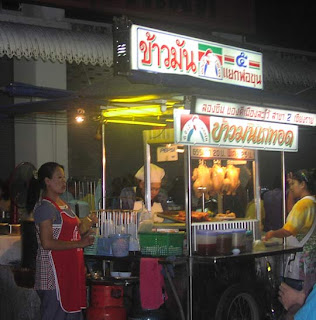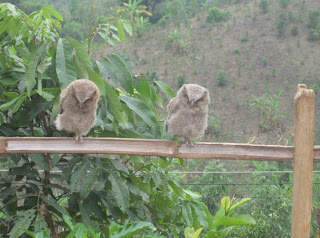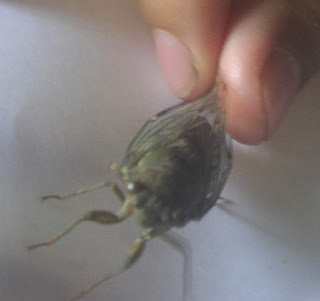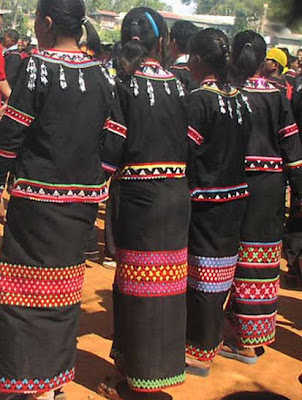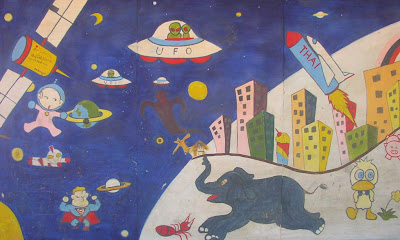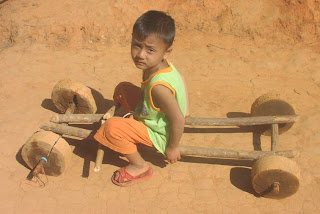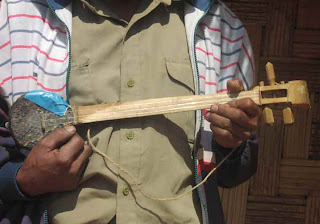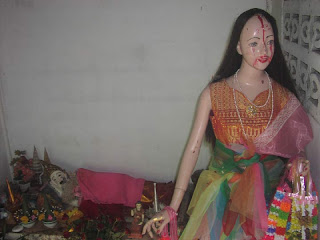Interview with a Shaman
The Yao, or Eu-Mien, a couple million people who live mostly in Kwangsi Chuang (Guangxi Zhuangzu) autonomous region of China (between Yunnan and Kwangtung), with smaller numbers in Hunan, Yunnan, Kweichow, and Kwangtung provinces, northern Vietnam, north and western Laos, and northern Thailand, speak closely related Sino-Tibetan dialects, but the widely dispersed groups have developed in different directions, adjusting their ways to the environments in which they live. Their religion fuses ancestor worship, animism and Taoism; tribal political structures don’t extend above village chiefs.
My wife’s people, the Lahu-na, prefer to not become bothered in affairs not directly important to their individual lives, and it was only with difficulty that I got her to go along on my interview with a Yao shaman. To her, I was being a busybody, sticking my nose where it had no real business being. Of course, she has a point, but my interest in the Yao pre-dates my interest in her; I have written about them before, and collected their art and handicrafts. And my interest in shamanism predates my knowledge of the Yao.
In the event, it was fortunate that I brought her along, as I eventually needed her help to get the gist of some of my questions across – I simply do not speak Thai like a Thai. My tones are bad, the sentence structures that I choose are often closer to what I would use in English than what a Thai would use, and there are other conceptual and vocabulary problems. My wife can understand what I am trying to say, and I could understand what she said to the shaman, but by the time we were two-thirds of the way through, her help was becoming essential!
The best I can do to present this as an interview is to paraphrase; I had a list of questions written out in English, and mostly was able to follow them, but conversation did wander a bit, and I won’t try to follow all that.
Q. Is there a network of Eu-Mien shamans?
A. Yes, insofar as for getting them to villages which don’t have one in residence.
Q. Do most of them farm too?
A. Yes. Almost all – when they don’t have duties as a shaman, they will tend crops.
Q. Do yao people travel much for ceremonies?
A. No. A shaman will travel, but villagers mostly stay put. A shaman travels when requested to do so.
Q. Is the Chinese spoken by Yao and that spoken by Lahu and Haw Chinese mutually intelligible?
A. Mostly Iu-Mien are multi-lingual, and where there are Lahu people, many will speak Lahu. Yao will learn local language wherever they are, but Chinese has many dialects, and with the Haw, often use of writing is better.
Q. Would a Yao, like a Lahu, utilize the services of a Haw shaman?
A. No. Must be Iu-Mien.
Q. Are there Eu-Mien fortune tellers?
A. Only books about birthdays. And coins for divination.
He showed me the coins – the same ones used for throwing I-Ching (I-Ching, or Yijing, the Book of Changes, is an ancient divination Chinese text; it first explains each line of possible hexagrams separately, then gives an overall interpretation of a whole unit - in cryptic, thought-provoking language). The book the Yao use, which comes from Hong Kong, the shaman said, brought in and sold only during New years celebrations, gives somewhat similar (I’m sure) analyses of possible combinations of 5 thrown coins.
One first holds the coins to one’s forehead and prays, then tosses out the coins one at a time. On the “khwam” side are two very ancient Chinese figures, not pictograms – looking to me slightly Arabic. On the “nai” side are 4 characters looking to me like modern Chinese. The coins, though, are about a century old (round with a square hole in the middle, called cash). All “khwam” is no good, all “nai”, good.
Q. Are some Iu-Mien shaman more animist, others more Taoist?
A. Certainly. But above all, they respect and revere our ancestors.First comes our original ancestor, Pan Hu, then the Three Pure Ones.
Q. Many who revere the Goddess of Mercy Jao Meh Kwan Im won’t eat beans, garlic, onions, beef… and might be completely vegetarian. Do some Yao do that?
A. Not especially, we just respect what is there already, and can ask her for help.
Q. At Ban Pa-duah, up above MaeSaliong Nigh, there’s a Yao shrine at a mountain spring. Do Yao believe in “Jao Tii” spirits of the land?
A. Because people lived where Yao came to, before we arrived, we must respect those buried wherever we are. But these don’t travel with us if we go elsewhere, as our ancestors do.
Q. How much, and how well, do young Yao still honor and respect, and observe, their traditions?
A. Quite well, but it depends on the parents, how much they observe the traditions.
Q. How do Yao feel about Farang NGOs?
A. Pay no attention.
Q. Is there much pressure to assimilate and be more like the Thai?
A. Only so-so. Students must wear school uniforms, but are still Yao at heart.
Q. Can some people tell what village a piece of Yao cross-stitching comes from?
(It's claimed this could be done with Laotian weavings, but I've not verified that)
A. No.
Q. Do the Christian yao still cross-stitch?
A. No.
Q. What makes a shaman? Is it just by choice? How does one become one?
A. Every year, once, two villages get together and sacrifice a big pig, and invite the ancestors to eat, and drink pure rice wine. We burn paper money (etc) and a Great Teacher will see who is interested to learn. Our Great Teacher comes from Ban Po Ba Kaem. He only speaks Yao, and the ancient special language, or dialect, of our shamans. Mostly it is up to success in study, but can also depend on personality.
By this time, my wife had bought a piece of the shaman’s wife’s cross-stitch, our boy Eugene (sounds like Thai for “live in China”) was finished munching on chips, and it was time to go, so I expressed my thanks, was invited to visit again, and told how useful my wife had been in facilitating communication!
To initiated Taoist priests, the many gods are manifestations of the one Dao. Ritually trained to know the names, ranks, and powers of important spirits, and to ritually direct them through meditation and visualization, educated believers know a complex theological system. Communal rituals has two levels: a priestly level, guided by meditation and observed by major patrons, and a public, theatrical level, performed by lower ranked assistants. Meaning is portrayed through visible action, i.e. climbing sword ladders or releasing floating lanterns. A ritual has subtle metaphysical-mystical structure for theologians, and visible dramatic structure for lay viewers. A shaman is often seen as having both magical or prophetic powers, indicative of spiritual attainment. They are believed able to heal, restore vitality, predict the future, read men's souls, and act as stewards of a system of moral retribution. Often non-conformists who embody different values and life-styles, their strict sense of moral retribution yet reinforces social values.
To the Yao, powerful forces, emotional states and roles or forms of success not only work through us, but in a way create us. In another way, they dream themselves, through us. These kinds of archetypes vary from society to society, creating tensions, potentials, tendencies and self concepts. For the Yao, gatekeepers, sheriffs, judges, bailiffs, guards, jesters, magistrates and department heads – bureaucratic forms most villagers have little experience of – formed a heavenly hierarchy while informing about a wider extent of social roles.
If it all sounds naïve and childish, primitive or like a role-playing game (Dungeons and Dragons), well, you’re partially right. But I will submit that none of us are wiser, or more advanced, than the Tao de Jing, or even understand it all that well, and any method of gaining a better approach to its wisdom has advantages. The Yao may not study the primer of Tao, but the seem to me to do better, by living its teachings, and not re-creating an image of their heavenly bureaucracy here in their Earthly lives. Thus maybe doing a little better than the rest of us.
A very few Yao words:
Yes tzèy-nyeh
No my tzèy
Thank you lent zing
Excuse me taw
How are you? May yem long nye
Good long
How much for it? Bòa tsèer

Pan Hu

The Three Pure (or Pelucid) Ones

Cross-stitch from a pair of Yao women's pants
It’s unnecessary to tout the importance English language has attained, but in presenting some local vocabulary which may well become all but forgotten within my young son’s lifetime, I wish to supply some context.
Many mourn loss of linguistic diversity - in the manner of mourning loss of biological diversity, and there is reason to that. But surely linguistic diversity is less important than biological, and even more difficult, to retain. Still, it’s a shame that the various lingos of the Golden Triangle area remain so inaccessible (as do so many others). Surely native speakers would be more likely to retain their unique way of speaking, and seeing the world, if at least some others would take interest in using it too, besides for trying to convert them to Christianity? I’ve met a few Farang speakers of the Thai northern dialect (Pasa Neua, or Kham Muang), and a couple who speak Akha. But T’ai Leu, Lisu, Yao? No. I’ve read that some CIA operatives spoke Hmong, but surely it wasn’t many; I doubt even 20.
Mandarin Chinese, spoken in all of China north of the Yangtze River, and much of the rest of China, too, is the native language of about 870,000 people. The Wu variety of Chinese, spoken by about 100 million, mostly in Kiangsu and Chekiang Provinces, is the language of Shanghai, the commercial hub of the country, and T'ai-chou, Ning-po, Soochow and Wen-chou. Cantonese, or Yüeh, the Chinese spoken in Kwangtung and southern Kwangsi provinces (including Canton, Hong Kong and Macau), has retained more features of Ancient Chinese than other forms. A majority of Chinese emigrants may be from areas where Cantonese is spoken, particularly central and western Kwangtung, and these about 80 million Cantonese speakers may control as much money as do Japanese speakers (127 million), but that extent of power is certainly no longer what it once was. And the relative ethnic homogeneity prevailing in Kwangtung stands in contrast to its great diversity of dialects: there’s considerable linguistic variety around Canton, with eight major dialects from the population center alone. Hakka dialect predominates in the north and northeast of Kwangtung, and Min-nan (or south Fukien dialect) is spoken along an eastern coastal area around Swatow. In addition to these Han dialects, there’re languages and dialects of several ethnic minorities, including Yao.
English may be spoken by over 500 million people, more than any other language than Mandarin. Not only do English speakers control more money than do Mandarin speakers, they control global transportation and communication, banking and finance, and the majority of important journals and institutions of science and technology. But let's not forget, behind every great fortune lies a great crime (and all)...
The next most important languages, Spanish and Hindi, trail behind with somewhere in the neighborhood of 400 million speakers each.
Spanish is spoken by well over a quarter billion people - in Spain, the Americas, and Africa; thus, just it’s a bit more important than Bahasa Indonesia/Malay and related lingos of Indonesia, Malaysia, Brunei, the Philippines, Taiwan, outlying parts of Madagascar, and the Palau and the Mariana Islands of western Micronesia. Its core area is Indonesia, Malaysia, and Brunei, but Indonesia has over 250 distinct languages. Most of the people are Malay, and speak languages of a Malayo-Polynesian base; Bahasa Indonesia evolved from a Malay dialect and has much in common with other Malay dialects, and so long served as regional lingua franca. A relatively simple trade language, not associated with a dominant ethnic group, Bahasa Indonesia has been a strong force in national unification, and is now learned by all children in school (local languages are the medium of instruction for the first two years, then Bahasa Indonesia is used for the remaining years). In 1972 a uniform revised spelling was agreed to between Indonesia and Malaysia, to improve communications ad so that literature could be more freely exchanged between the two countries. Indonesia’s population over 230,000,000; Malaysia’s about 27,500,000, and Burnei’s about 350,000; so, not quite as many speakers as Spanish.
Next in importance (in my estimation) comes Arabic (over 200 million speakers), then Russian (maybe 150,000 speakers), and French (130 million). These days, with but eight languages, one could do quite well, almost anywhere!
It was amazing to find (googling language speakers population) that only between 20 and 30 million Thais should be considered native speakers. There may be no more than 45 million fluent Thai speakers! The rest speak Lao, Khmer, Pasa Neua, Malay or Yawi, T'ai Leu or other tribal languages, Mon, Burmese or Chinese, particularly the Teh Chew dialect. This may be a big part of the problem the Bangkok-centric government is having...
Part of the reason smaller languages are disappearing is their lessening utility; a language used by hunters refers to game, its consumption, and patterns of nature now subject to as great change as has access to game. The protective specialization which gave rise to them offers significantly less survival advantage. But flexibility, fluidity and adaptability are advantageous, and dialectical aptitude can certainly have advantages.
With apologies for lack of any particular order, some local words:
Some Lahu-na (once the lingua franca of the area):
Nice to meet you Ahwiipah chay sahlah (to an older male)
Oh nii pah chay sahlah (to a younger male)
Ah wiimah chay sahlah (to an older woman)
Oh niimah chay sahlay (to a younger woman)
Ah pu joh chay sahlah (to an old man)
Ah pii joh chay sahlah(to an old woman)
How are you? Che sa lah (or lay, for ‘red’ lahu-nyi)
Are you tired? huh jah leh
Thank you O bon ooh jah
Help Nah a suu gah lah
Make a joke da ku-ku way
Sing a song lay koh ka!
The border (at Burma) mii tzu
Restaurant a tzu haw guh
Eat ja!
Insect pu hah (gu)
Not feeling well mah chay sha
Name oh meh
What is this chi a toh ma lay
I don’t know ma shi
I want to know suu ga way
Stop, wait tii kuh jay
No problem fah ta! suh
Problem gah jo way
Love ha!
Angry gee-it, or, buut ja
Li hat ya; hat vey
Hurt nah-ja!
Can pay aw layah
How much tao dai cama-lay
Tea lah
Dark na! geh na-hu
Fire a mii tu way
Hot ho ja!
Spicy ah pii peh ya
Clothes ah po!
Road ya! kaw
Go ha! gay!
Stay cho! kah chay
Have joh way
Here cho! gah
Midnight day chin knee
Day nèe
Water ee-gah
Boiled water booh vey eek-cah
Cold liit' jah
Slippery chat-yah
Dirty cha! cha-eh
Old oh-pii
Baby yah-ae
Lover choh-ha
Lost the way may-oh; may po
Walk yuu-way
Alcohol zzuh (falling tone)
Sleep zzuh' (rising)
Blanket ah-bu!
Danger a lot chi mah-na
Happy ha-lay-ja
A lot chi mah-na!
Yes yo
No ma
Thank you oh bon ooh jah
Excuse me oh bon tay-lay
Cannot (day) mah peh!
Where co ga lay
I don’t understand chaw ngà mah sheè
What is your name no toh mah meh veh lay
What a too mah lay
Altar toh mah lay
Wash (face) (meh!fuh)suuh!peh tu guh
This way tchay day djah
That way oh day djah
Headman ka-tche
Tomorrow so-pò
Food jah-do
Thirsty it!gah nam; it!gah muah
Headache oo-coo na vay
Pain na vay
I want to buy nga vuh vei
Want huh-gah
Far uu-jah
Near chu fu neh
When koh tah laay
Now (sa)tii-kuh
Good Da-jah
I can help Nga gah-vay
Rest room kay kuh yay
Village ka! koh
House yay
Good da! way
Come here cho gah lah
Go away chi fu fu geh
Battery tjit su mah hey
Telephone suu-tii (using Chinese)
Where can I find a restaurant a tzu awe pah! Aw-guh koh ga! joh lay
And some Kham Muang:
How are you? Pen yang dai pong, or, sabai dii goh
Nevermind bah bpen yahng
Thank you yindii
Help chuay gaam; chuai noi
Make a joke oo! len
Sing a song hong plaeng
The border (at Burma) lai na
Restaurant han ahaan
Eat kin gau
Insect maeng
Not feeling well meuy
Name ju
What is this an-yang nii
I want to know khai huu
Don’t know bah huu
Are you tired? It! goh
Fun meuan (falling tone)
True da-ta (rising tone)
How much tao dai
Much, many, a lot (f)jaht-(h)nuk
Do, make nyia
Can dai gah
Love yu nim-nim
Stop, wait yahng
Bed sa-lee
No problem bam ii ban ha
Angry gee-it
Flat tire yang hua
Have you got something? Mii an-yang goh
Now bah diao nii
These are things I’m only just begun in my explorations of; things unfortunately difficult to find the time and energy to get around to, but I do hope my efforts to familiarize myself might make the route easier for at least a few others.
But remember, knowing a person’s name may give you some power over them, but knowing, and using, their language poorly, might give them some power over you!
Just recently, parking my bike in front of a crowded e-mail shop and helping young Eugene off, I got a "Thai tattoo" on my leg when it touched the exhaust pipe. I won't provide a picture of that, but am posting some others:

some tattooing equipment

a protective tattoo

a power tattoo

a woman's prison-made tattoo

divination-structure rasami
and from a temple painting, a scene of Olden Times:




